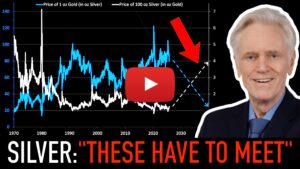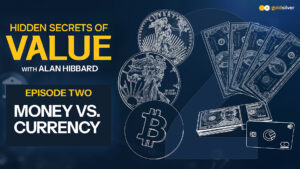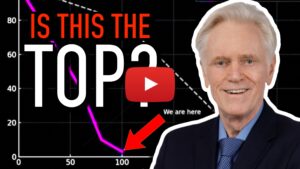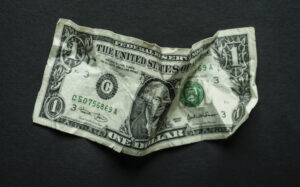Goldman Sachs recently made headlines predicting that gold could reach $5,000 per ounce if Donald Trump undermines the Federal Reserve’s independence. But as Mike Maloney and Alan Hibbard explain on the latest GoldSilver Show, that estimate may be far too low. In fact, history, central bank behavior, and global buying patterns all suggest much higher levels are possible.
Wall Street Finally Wakes Up
For years, major banks like Goldman Sachs and JPMorgan dismissed gold as an investment. When gold traded at $400 or $700 an ounce, they urged investors to look elsewhere. Now, with gold having surged over 40% in just nine months, those same institutions are scrambling to catch up — and issuing bullish forecasts.
Mike Maloney calls Goldman’s $5,000 projection “idiotically low.” His own research, dating back nearly two decades, pointed to a range in the $6,000s under far less dire financial conditions. With today’s ballooning debt and weakened dollar, the case for much higher prices is only stronger.
The 1% Treasury Shift That Could Ignite a Stampede
One of Goldman’s key data points is that if just 1% of privately held U.S. Treasuries move into gold, prices could spike to $5,000. But as Mike points out, markets rarely stop at 1%. Once momentum begins, 2%, 3%, and beyond could follow, triggering a wider selloff in stocks, real estate, and other assets.
This kind of rush has happened before. In the late 1970s, gold prices soared as investors sought protection from inflation, geopolitical turmoil, and currency instability. The difference today? Demand is already being fueled by Asia, while Western investors have yet to pile in. When they do, fireworks are almost inevitable.
Fed Rate Cuts: Gold’s “Rocket Fuel”
Another factor few are considering: Federal Reserve policy. History shows that when the Fed cuts rates, gold tends to surge. Charts presented in the show reveal that past cutting cycles delivered average gains of over 100% for gold in just a few years.
With U.S. debt levels at record highs and the economy facing inflationary pressures, the Fed is boxed in. If rate cuts return, negative real interest rates will likely follow—the exact conditions that fueled gold’s greatest bull markets in the 1970s and early 2000s. As Mike puts it, that’s “rocket fuel” for precious metals.
Why This Time Is Different
Skeptics often dismiss the phrase “this time is different.” But when it comes to gold, Mike argues it’s true. In past bull markets, only a fraction of the world could even participate. In the 1970s, U.S. citizens were barred from owning gold until 1975. Major parts of the world, from China under Mao to the USSR, were absent from the market entirely.
Today, it’s global. From central banks to individual savers across Asia, demand is broad, deep, and accelerating. Add in growing distrust of fiat currencies, political uncertainty, and Wall Street’s belated shift toward gold, and the stage is set for prices well beyond $5,000.
What This Means for Investors
Goldman Sachs may finally be recognizing gold’s potential, but their $5,000 forecast could underestimate reality by a wide margin. As Maloney and Hibbard argue, the true floor may be far higher. With rate cuts looming, central bank buying strong, and global demand surging, investors who act now could be positioning ahead of one of the most powerful moves in history.
Investing in Physical Metals Made Easy
Open an AccountYour Questions Answered
Why does Mike Maloney think Goldman Sachs’ $5,000 gold forecast is too low?
Mike argues that $5,000 is “idiotically low” because his earlier research suggested gold could already be worth $6,000+ when debt levels and dollar weakness were much less severe. Today’s environment, with soaring debt and global demand, points to much higher potential.
How could a small shift in U.S. Treasuries impact the gold price?
Goldman Sachs noted that if just 1% of privately held Treasuries moved into gold, it could send the price to $5,000. Mike warns that once momentum starts, it rarely stops at 1%—creating a stampede into gold, stocks, and real estate similar to past bull markets.
What role do Fed rate cuts play in gold bull markets?
Fed rate cuts historically act as “rocket fuel” for gold. Past cutting cycles have triggered average gains of over 100%. Lower rates often push real interest rates negative, a condition that has coincided with gold’s strongest runs in both the 1970s and early 2000s.
Why is today’s gold market different from past cycles?
In the 1970s, participation was limited—Americans couldn’t own gold until 1975, and much of the world was closed off. Today, it’s global. Central banks, Asian buyers, and retail investors worldwide are driving demand, making this bull market broader and potentially stronger.
What’s the key takeaway for investors?
Goldman Sachs may have caught up to the story, but $5,000 likely underestimates gold’s true potential. With rate cuts looming, central banks buying aggressively, and Asia leading demand, the stage is set for a powerful move well beyond Wall Street’s projections.
Get Gold & Silver Insights Direct to Your Inbox
Join thousands of smart investors who receive expert analysis, market updates, and exclusive deals every week.







